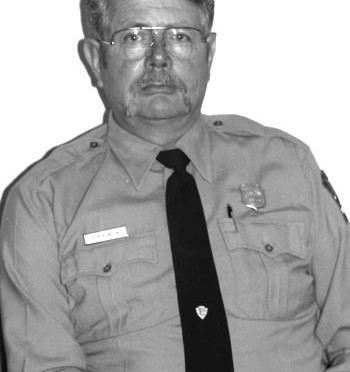That’s what you were looking at when you were trying to add some positions at Crater Lake?
Gotta have it. Management, be it the superintendent or a division chief, has to have within the sphere of the operation that expertise that you can draw on. It would have to be a viable part. We had to bring history into Crater Lake. We had to have that mix so that it wasn’t totally dominated by any one side. For example, when I was at Theodore Roosevelt National Park in North Dakota, we had an interpreter. It could have been argued that it was a historical area with natural-area overtones, or the other way around. The way that Theodore Roosevelt had dealt with that particular problem, because they only had one interpreter, was one chief interpreter would be a naturalist, the next chief interpreter would be a historian, and the next one would be a naturalist. They flip-flopped trying to keep some sort of a balance. It actually wasn’t too bad. The books in the natural history sales tended to change fairly often. It did work, but far better would it have been if we had one of each. It really wouldn’t make a terrible difference, at the park, who was the chief duck and who was the other one. You didn’t need two division chiefs, you just needed one. But if the chief was the historian, the other one ought to be a naturalist.
Who in WAS0 influenced you the most during your participation in the DMP (5)? What were the things they emphasized to prospective superintendents?
When I went into the DMP, I wanted to break myself out of the mold of “ranger.” There were a bunch of us in that DMP group who came from a ranger background. I had more interpretation than most, because I had seasonal time and as district I&RM I kept my hand in the interpretive business, including getting to go to some of the really high-powered interpretative schools as a ranger. I was the only ranger that ever made that great nine week long Harper’s Ferry school. In answer to your question, I avoided going in and working in the ranger office. They asked me where did I really want to work, and I said in park planning. I really wanted to be a part of the planning process, feeling that as a division chief or superintendent some time, I had to be able to understand how the planning went into the parks and where the parks were. So I put myself in the planning end, so I could go anywhere I wanted, practically. Jim Stewart, who at that time, for all intents and purposes, headed up the master plan work in Washington office. So I worked in that for a while. I learned buckets about how the planning process worked. Some of that is the stuff that’s behind the scenes. A lot of times, in those days, when they gave you a master plan, there were a lot of things that were done under the table or in the back room. Jim Stewart certainly had to be a major player in that. I spent, but not as much as I would have liked to, a lot of time around Howard Baker, who was the associate director of operations on that Hartzog team. Except for George and his deputy, he [Baker] probably was the most potent guy in there. Howard had some perspectives on things that set me in pretty good stead.


